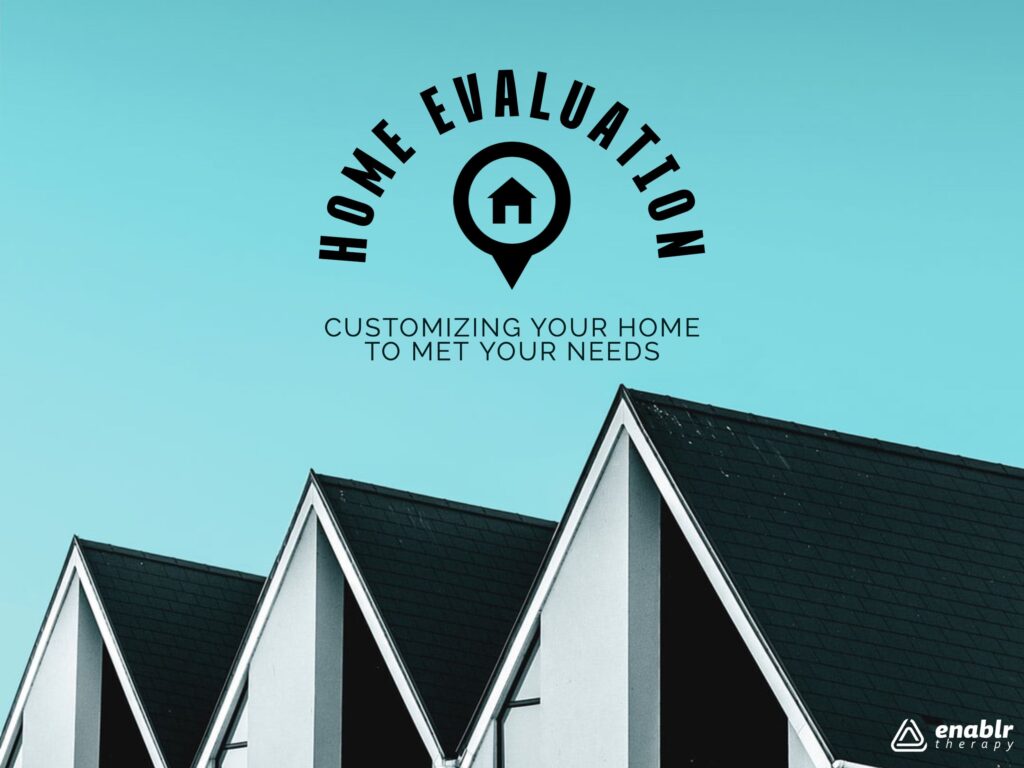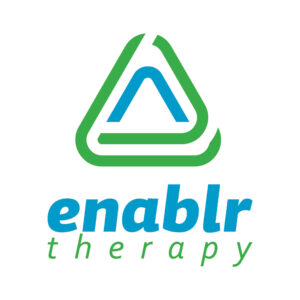
Are you in need of a home evaluation?
As senior adults age, changes to their body’s physical and mental abilities can impact safety and independence within their home. It is estimated that one in four older adults (65 or older) will fall in the next year. Yet, most seniors would prefer to age in place, remaining in their current home and community.
Approximately 28% of adults aged 65 and over had problems accessing some aspect of their home like the kitchen cabinets, steps, or a bathtub. – The US Census Bureau
Some universal design standards, like placing grab bars by toilets and in tubs/showers, can help increase safety and access. However, each individual has their own unique abilities and needs. A home evaluation by an occupational or physical therapist considers universal design concepts while improving safety. They will make recommendations based on the person’s actual needs, access to their home’s features, and participation level in daily activities.
What Is Assessed During a Home Evaluation?
Mobility
Looking at how the senior moves around is important especially with fall prevention. The therapist may make recommendations regarding the use and need for assistive mobility devices such as a cane, walker, or wheelchair.
Home Entry and Exit
The therapist will evaluate the individual’s ability to get in and out of the home, including:
- The navigation of pathways
- Steps and/or ramps
- The ability to open and close the door
- Transfers into and out of cars
Room Access
Observing how the individual moves through hallways, doorways, stairs, and around obstacles in each room is another key component. The therapist will also see how the individual gets onto and off of furniture, such as chairs, couches, the bed, and toilets, while providing tips and tricks to make the home more accessible and safer.
Visual and Auditory Access
The therapist will assess the older adult’s functional vision and hearing. Observing how well they see and hear within their home will help the therapist make recommendations. This could include lighting, doorbell and home security, phone service, clocks, entertainment systems, and more to improve the senior adult’s ability to interact with their environment and others.
Participation in Activities of Daily Living
The therapist will talk with the client to get an understanding of what activities they enjoy doing, as well as what activities they need to do. The therapist will then work with the client to remove any barriers that they are experiencing.
For example, if a client enjoys cooking, the therapist will evaluate their ability to access cabinets, refrigerator, stove, microwave, and dishwasher.In addition, they may also look at their ability to use a knife, read a recipe, open cans and jars, or lift a 5-pound bag of flour.
Suggestion for modification may include:
- Using adaptive devices
- Rearranging cabinets
- Changing how containers are carried or handled
Medication Management
Another consideration during a home safety evaluation is exploring how the senior adult accesses and ensures accurate compliance with their medication. There are a variety of medication management tools such as alarms or bottle openers that can help an individual follow their prescribed health plan.
Smart Technology Usage
There is a variety of smart home technology that an older adult can benefit from, including fall detectors, virtual home assistants, and home monitoring systems. Depending on the cognitive level and their comfort with technology, these devices may help to promote independence, safety and social connection.
Post Evaluation
Following a home evaluation, the therapist will provide the client with a written report that includes a list of recommendations. These recommendations may include:
- Devices or adaptive equipment that support independence and safety
- Alternative methods of completing activities
- Additional follow-up therapy services
- Referrals to other healthcare providers for further assessment
The therapist may request additional visits to assist with more in-depth steps, for example:
- The implementation of the recommendations
- Provide further training of new techniques
- To develop a therapy program that addresses a specific need.
If structural modifications are needed for a home, such as a ramp installation, the therapist can work with the family and/or contractor to ensure that designs will meet the individual’s needs. However, it is the responsibility of the homeowner and contractor to ensure that modifications are in compliance with building best practices and applicable codes.
Booking Your Home Evaluation With Enablr Therapy
If you or your loved one want to remain in your home but are struggling to fully access your home or participate in everyday activities, Enablr Therapy is here to help. Our team of occupational and physical therapists can work with you to address your unique needs. Book your appointment today and a member of our concierge team will reach out to you shortly.
References
CDC (2015). A CDC Compendium of Effective Fall Interventions: What Works for Community-Dwelling Older Adults. Retrieved from https://www.cdc.gov/homeandrecreationalsafety/pdf/falls/cdc_falls_compendium-2015-a.pdf
US Census Bureau (2020). Old Housing, New Needs: Are U.S. Homes Ready for an Aging Population?. Retrieved from https://www.census.gov/content/dam/Census/library/publications/2020/demo/p23-217.pdf



